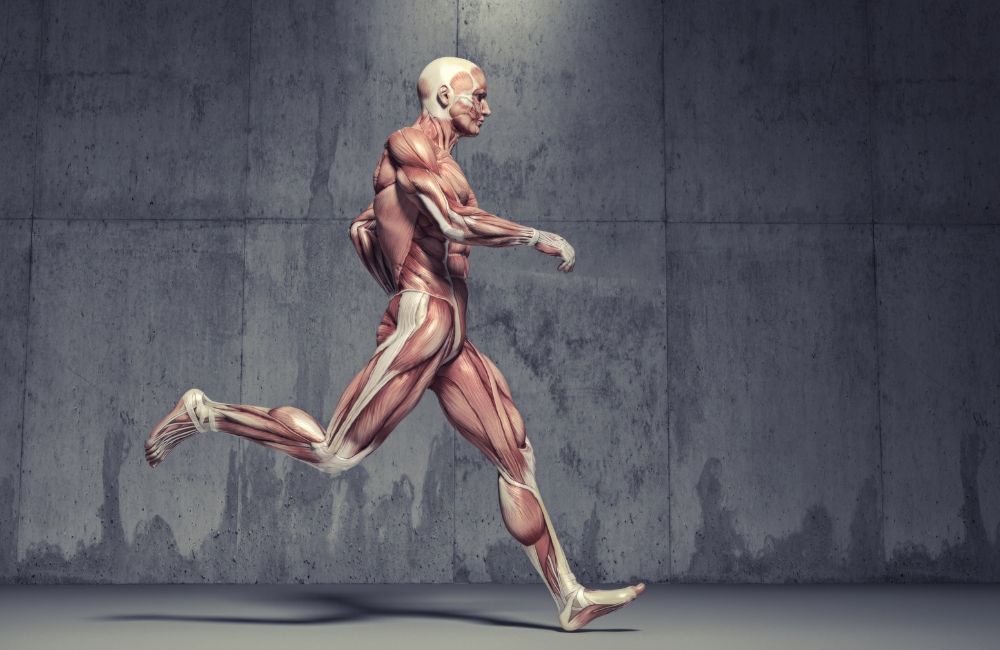
Having good hip mobility and strength is important because stronger hips give us better balance and drive.
They connect our core muscles and the legs. If the hips are not moving efficiently, the legs will not have the power or speed necessary to walk or run well.
In this article, we’ll share 7 exercises to improve your hip mobility, strength, and overall fitness.
You’ll also like:
How to Perform the Half-Kneeling Hip Flexor Stretch Correctly
Do These Two Hip Stretches To Undo the Damage of Sitting All Day
The Best Types of Exercises for Runners
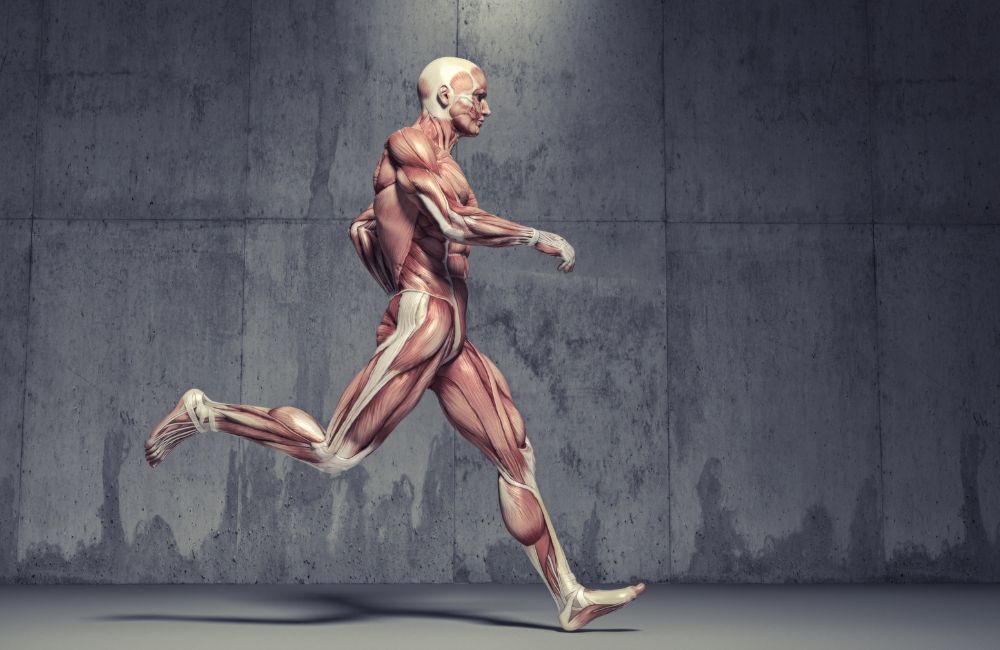
Running is a full-body exercise.
When strength training, you want to perform compound multi-joint exercises that train your movement patterns, not just your individual muscles.
You’re probably already familiar with classic strength exercises such as deadlifts, squats, or bench presses.
These exercises mimic movements we do in real life like bending down, picking things up, and pushing.
With that in mind, you want weight training exercises that mimic the movements needed for running.
And not just your legs!
You also need to target your upper body to avoid muscle imbalances.
Bodyweight Exercises
Use the bodyweight exercises mentioned below after an easy run or on cross-training days.
These bodyweight routines will help you recover while building strength.
Effective exercises are lunges, plank variations, push-ups, and side leg lifts. These will use your own body weight to build your core muscles while preventing injuries.
Hip Strengtheners
Weak hips are a serious problem area for runners who tend to sit for long periods of time.
Consider the ITB Rehab Routine. This is a series of exercises to treat and prevent IT band injuries. It can also work for general injury prevention.
This strength training program focuses on glute and hip strength which are the stabilizing muscles used in running.
Flexibility Exercises
Flexibility is imperative for runners. As you run, the joints and connective tissues in your legs tighten.
Focusing on your flexibility will loosen these muscles, making your movements smoother.
Before your run, warm up with dynamic stretches to prepare your muscles. Be sure to stretch after your run to cool down and recover.
Focus on stretches targeting your hip flexors, quads, calves, and hamstrings.
Here are the 7 best strength exercises that’ll make you a better runner.
7 Best Strength Exercises for Runners
If you’re a beginner, start with a lower number of reps and sets. Slowly, progress reps.
Also, start with a lower weight. With experience and muscle, you can gradually add heavier weights.
If you’re looking for even more of a challenge or an increase in your heart rate, ramp up the intensity!
Perform the strength workout faster. Or test your balance by trying one-legged variations!
Remember that if you are experiencing pain, especially knee pain, consult a doctor before starting strength exercises.
1. Glute Bridge
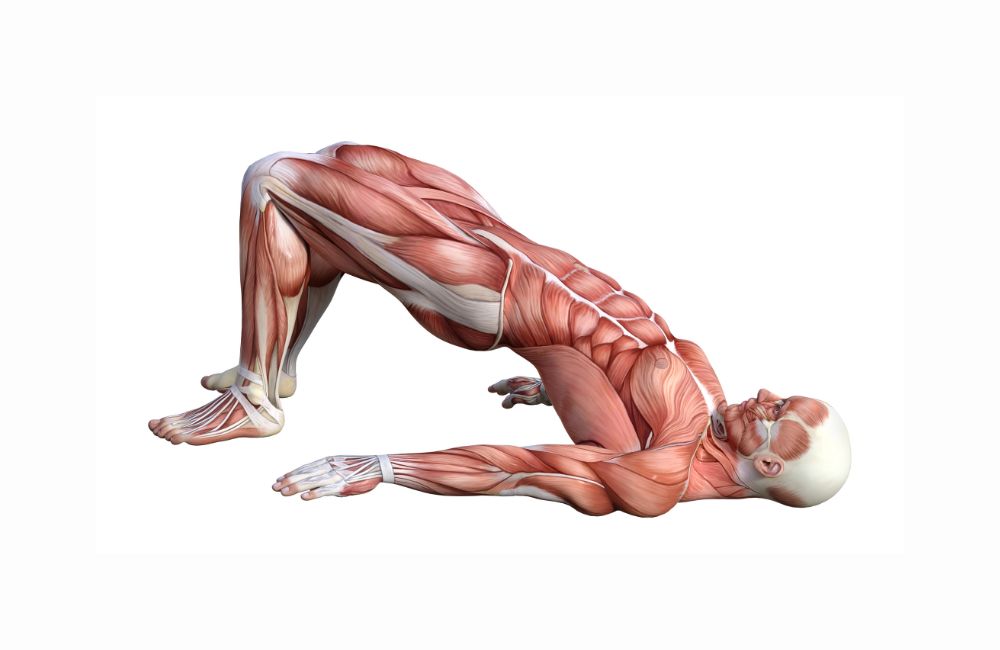
Target your glutes, quadriceps, and hamstrings with the glute bridge.
Start by laying on your back with bent knees and feet firmly planted on the mat.
With your arms by your sides, on an exhale, press through your triceps, arms, and heels to lift your hips in line with your knees and your shoulders. Squeeze your glutes and engage your abdominals.
Pause. With control, slowly lower your hips back down to the mat vertebrae by vertebrae.
Want to amp it up? With your hips raised, lift and straighten your right leg so your right heel is facing the ceiling. Pulse for 5 before lowering back down. Repeat with the left leg. That is one repetition. Repeat for 5 – 7 on each side.
2. Resistance Band Side Steps
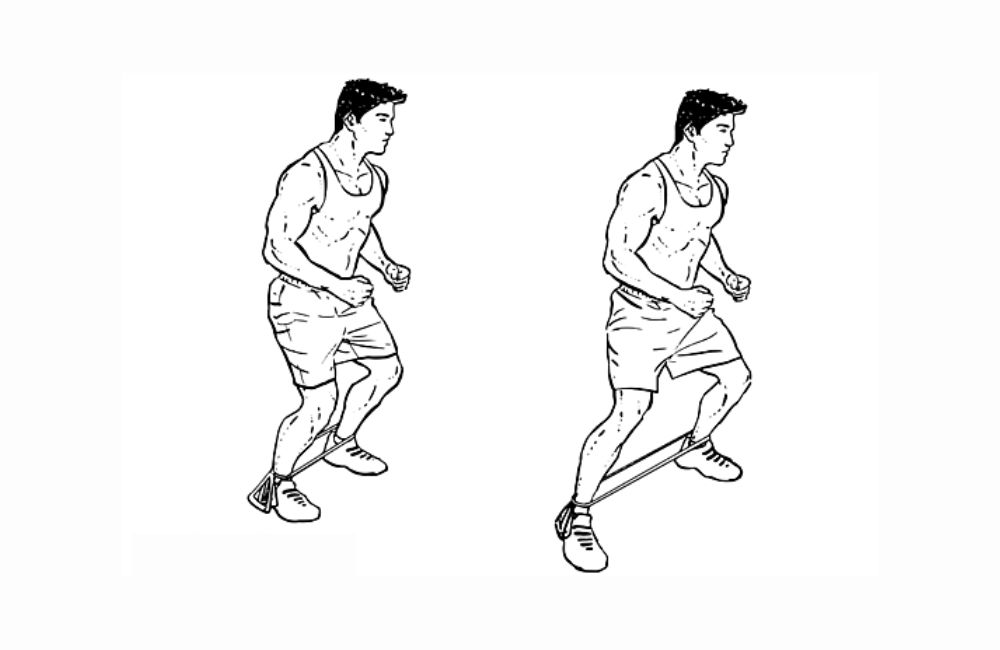
Loop your resistance band around your quads, above the knees. Stand with your feet shoulder-width apart. Clasp your hands in front of your chest.
Slightly hinge at the hips and lower into a half squat. Step your right foot out to the side. Follow with your opposite leg. It’s important to keep tension in the band the entire time.
Repeat back and forth for 5 – 7 reps. You can even turn this into a lateral walk by taking 5 steps to the right, then 5 to the left.
Feeling spicy? Hold a dumbbell!
3. Reverse Lunges
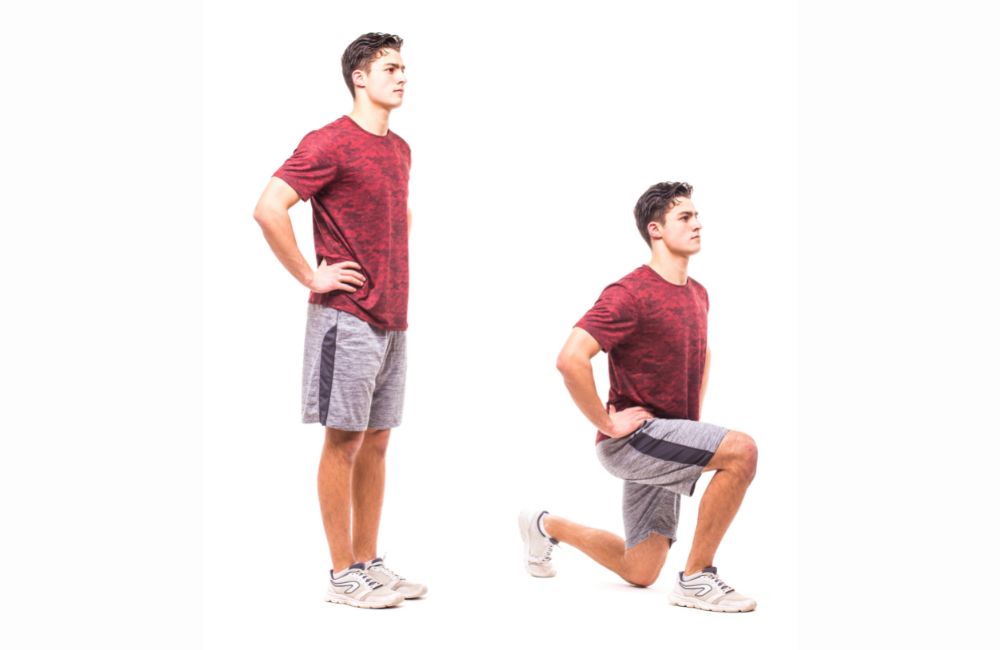
Stand with your feet shoulder-width distance apart, hands by your sides. Step backward with your left foot, staying on your toes.
Lower down, creating a 90-degree angle in both knees at the same time. Press back up, stepping your left foot forward into the starting position.
Complete 5 – 7 reps on each side.
To up the intensity, hold a dumbbell or weight in each hand.
4. Barbell Deadlifts
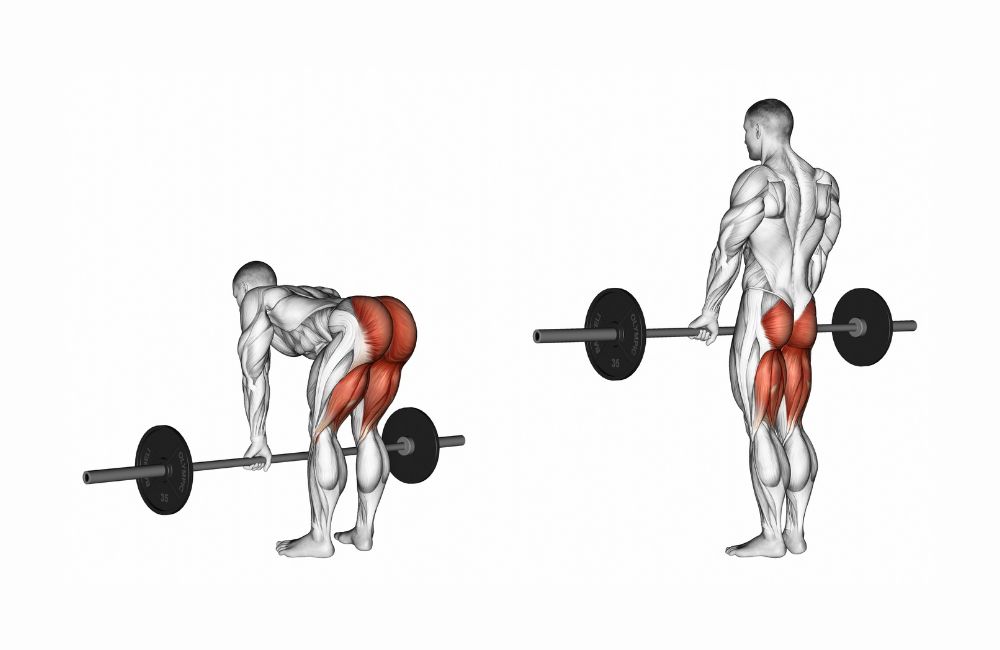
As a personal trainer, deadlifts are one of my favorite weight-lifting exercises.
This exercise targets your posterior chain, specifically your seat, hamstrings, calves, and lower back.
Remember, proper form is imperative.
Begin standing in front of your barbell with the weight of your choice, feet hip-width distance apart. Grab the bar with an overhead grip. Your wrists should be just outside of your legs, above your ankles.
Slightly bend your knees, shins grazing the bar. With a neutral spine and chest lifted, engage your posterior chain and lift the bar close to your legs.
Don’t lean back or around your spine. Slowly return the bar to the mat.
That is 1 rep. Add heavyweight with experience.
Test your balance by trying the single-leg deadlift! Lift your leg behind you as you deadlift.
5. Squats
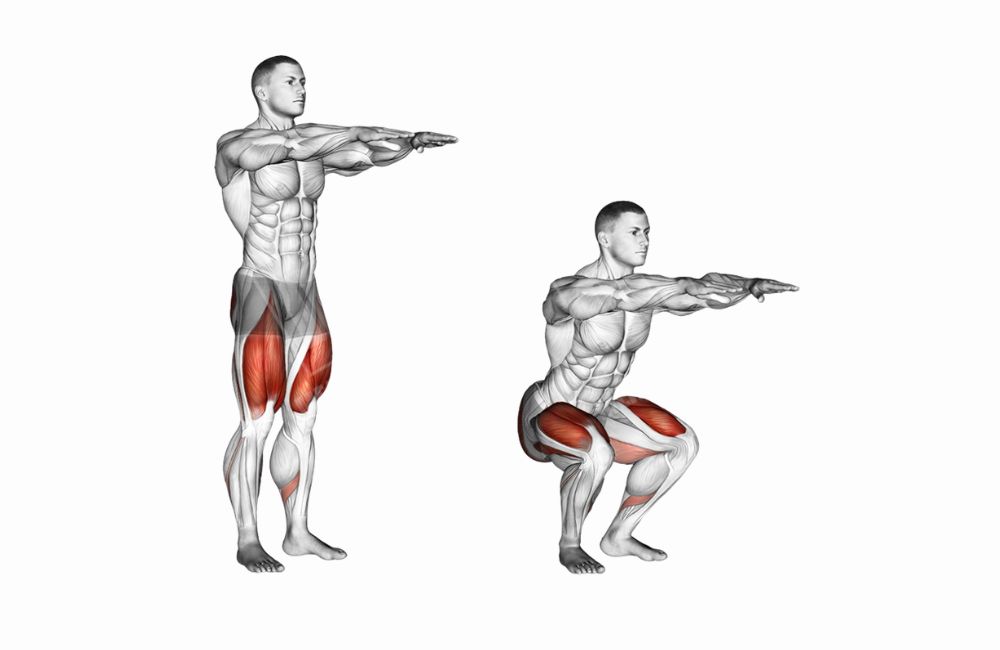
Squats are another important exercise that targets the lower body, specifically the glutes and quads.
Again, proper form and posture are imperative.
Take your time with these reps.
- Stand with your feet hip-width distance apart, toes slightly turned out.
- Straighten your arms, shoulder-width, in front of you and keep your gaze straight ahead. Engage your core as you lower your hips and buttocks toward the ground.
- Keep your knees in line with your feet. Once your reach the bottom of your squat, exhale and press through your heels, engaging your thighs as you rise back to the starting position.
- Your torso will be in a straight line the entire time.
Once you’ve mastered the bodyweight squat, have fun adding heavier weights!
You can use free weights, dumbbells, or a medicine ball to build your muscle mass.
6. Plank
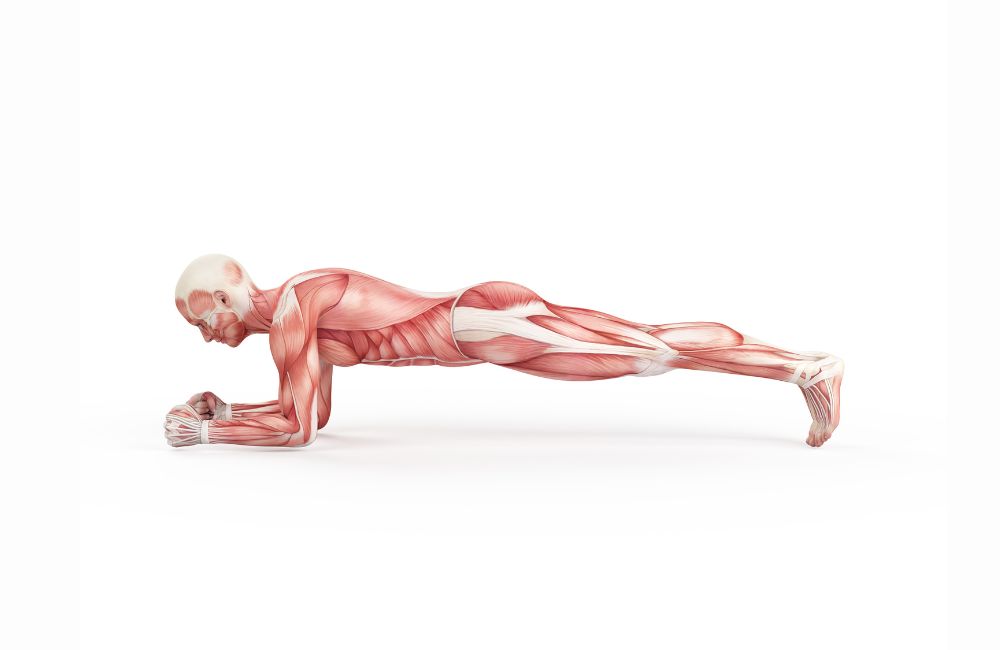
Planks are another great exercise that targets your core muscles.
Set yourself up by laying on your belly. Place your palms under your shoulders and tuck your toes. Press the ground away as you lift your body into a plank position. Hold.
Keep your core muscles engaged the entire time and don’t forget to breathe!
Start with a short period of time, 30 seconds. Add more time as you develop a strong core.
There are many variations of this exercise. You can perform on your forearms with your elbows under your shoulders.
You can also try the side version or add shoulder taps.
7. Russian Twists
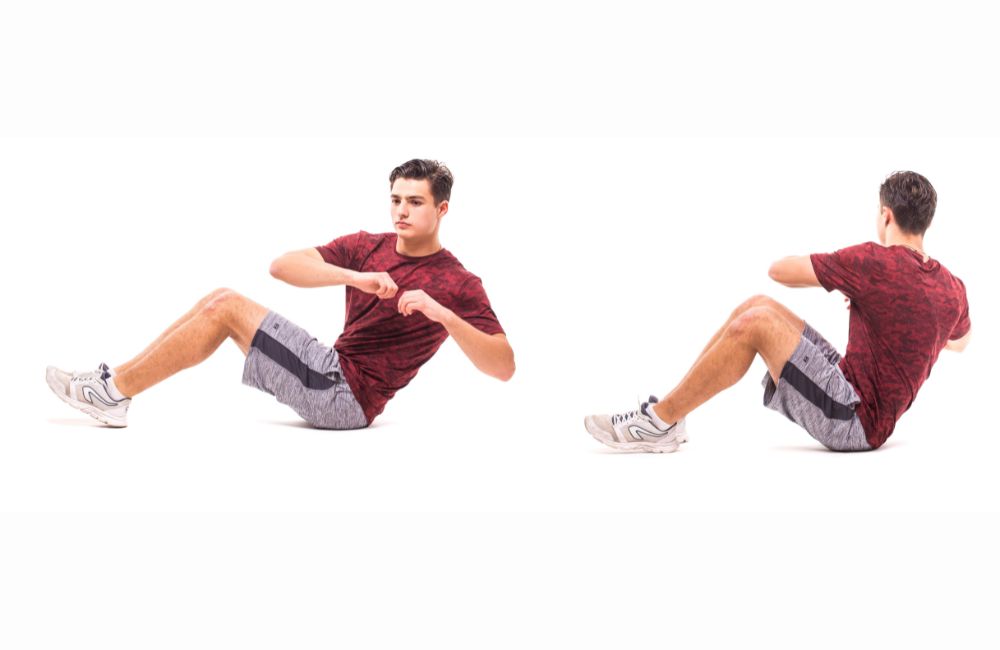
Target your obliques and hip flexors with the Russian Twists core workout.
Have a seat on the ground. Bend your knees, placing your feet on the floor. With a straight spine, lean back to a 45-degree angle, abs engaged.
You have a few options on your hands. Option 1 is to clasp them at your chest. Option 2 is to straighten both arms so that your hands travel to the outside of your thighs as you twist.
Use your abs to twist to the right. Pause, and return to the center. Twist to the left. Pause. Return to the center.
This is 1 repetition. Complete 8 to 10 reps.
To add intensity and muscle growth, hold a weight in your hands or perform on a stability ball.
Runners Circuit Workout
Combine these 7 exercises to your strength routine to create a 10-minute circuit based on your level of fitness. Rest between sets and gradually add weights, progress reps, or try the variations!
Also Checkout:
50 Best Bodyweight Exercises for Beginners
Best Foam Roller Exercises to Speed Up Muscle Recovery
The Takeaway
You don’t need to be marathon training to want to become a better runner.
Your injury risk will decrease drastically by simply adding just 10 to 20 minutes of strength work each day!
Add these running-specific strength training exercises to your strength program to build muscle and take your training to the next level.
You will run more, train smarter, and race faster. Strength exercises are especially important for new runners to target muscles and see progress.
Happy running!


